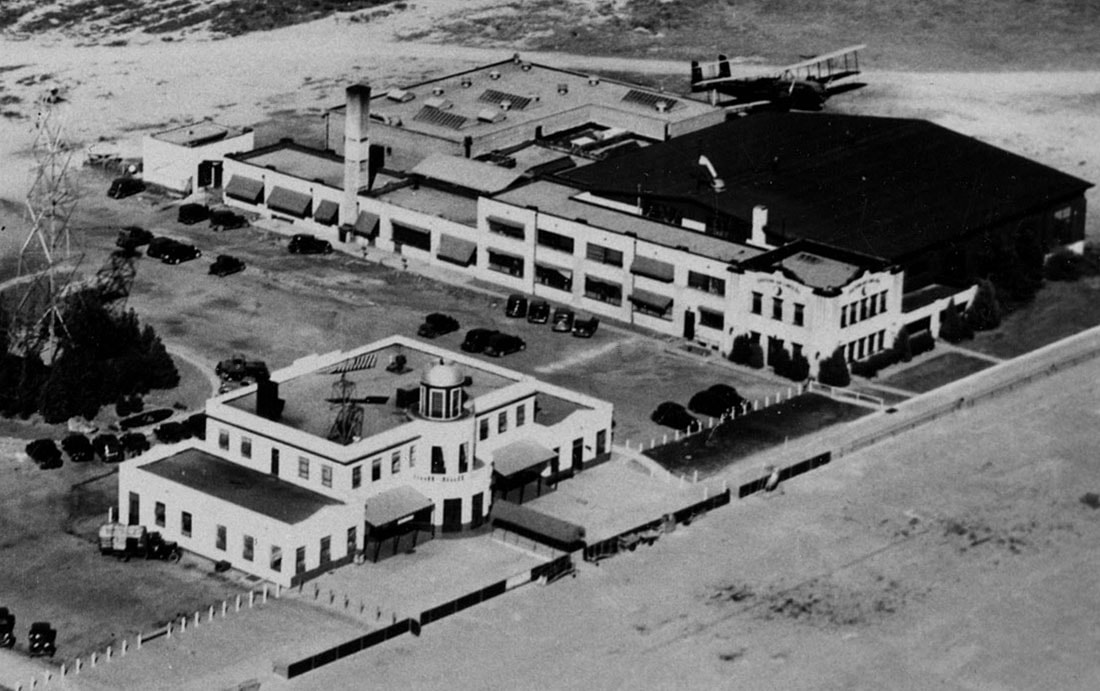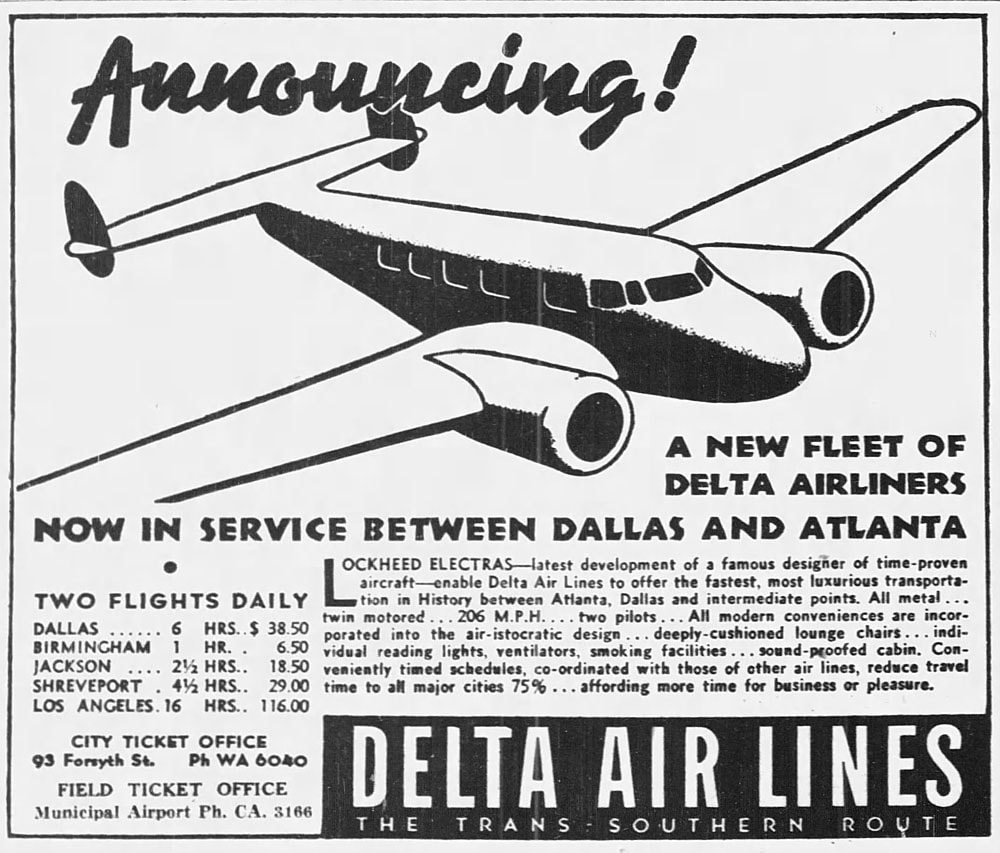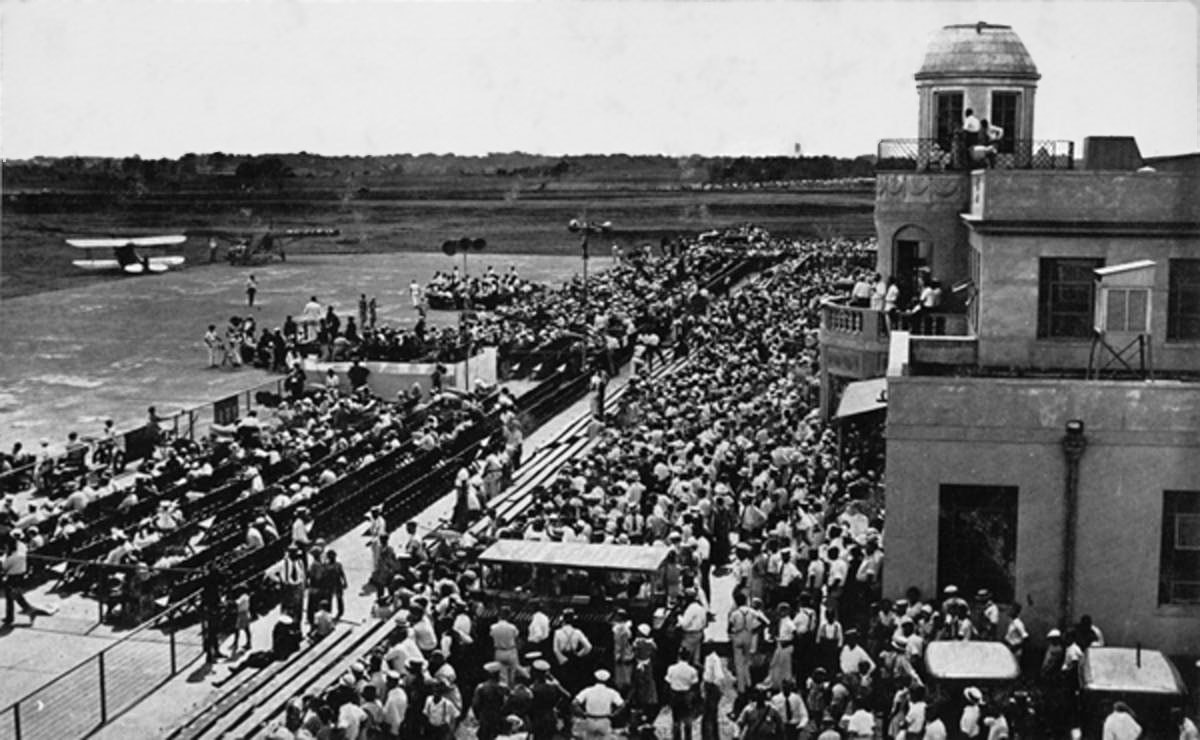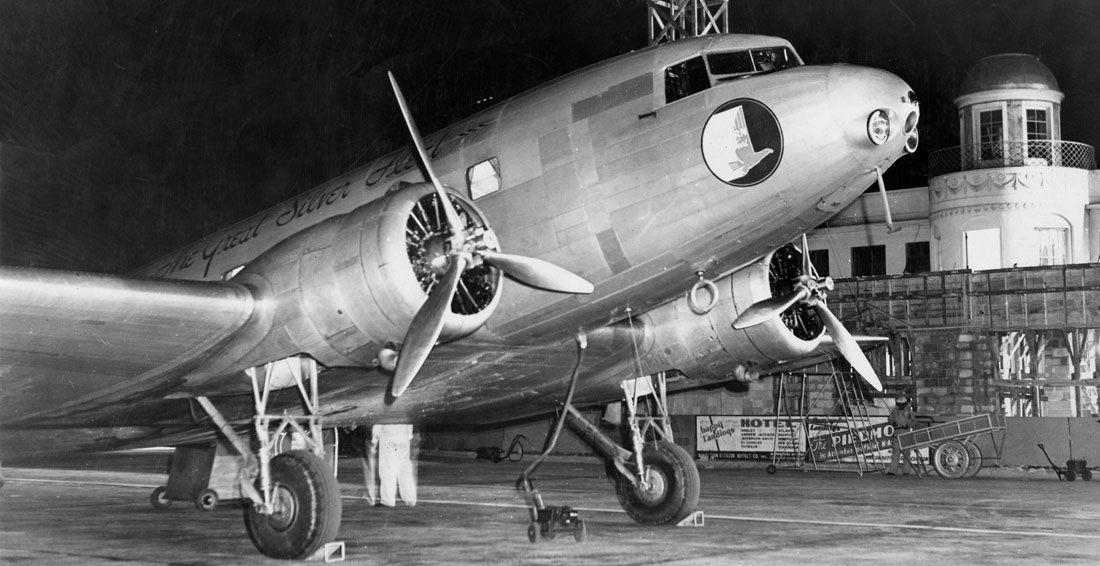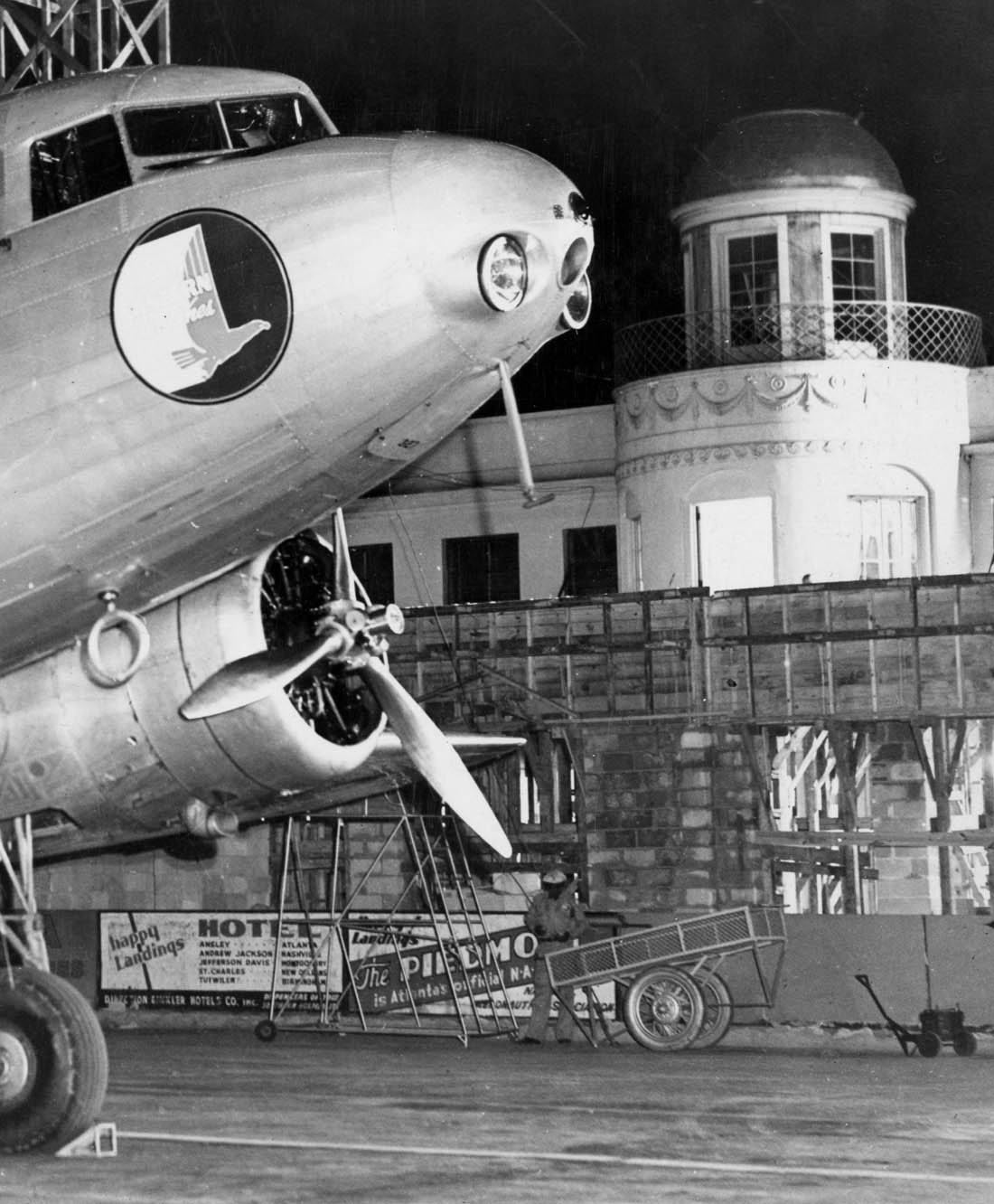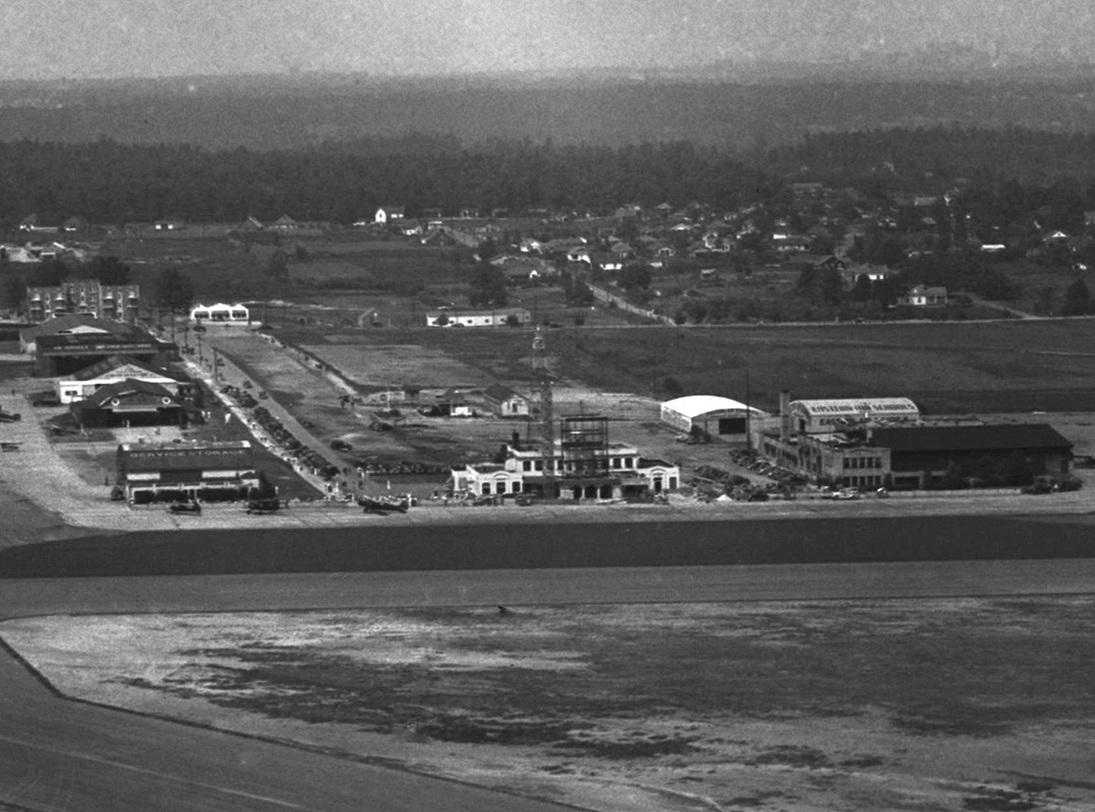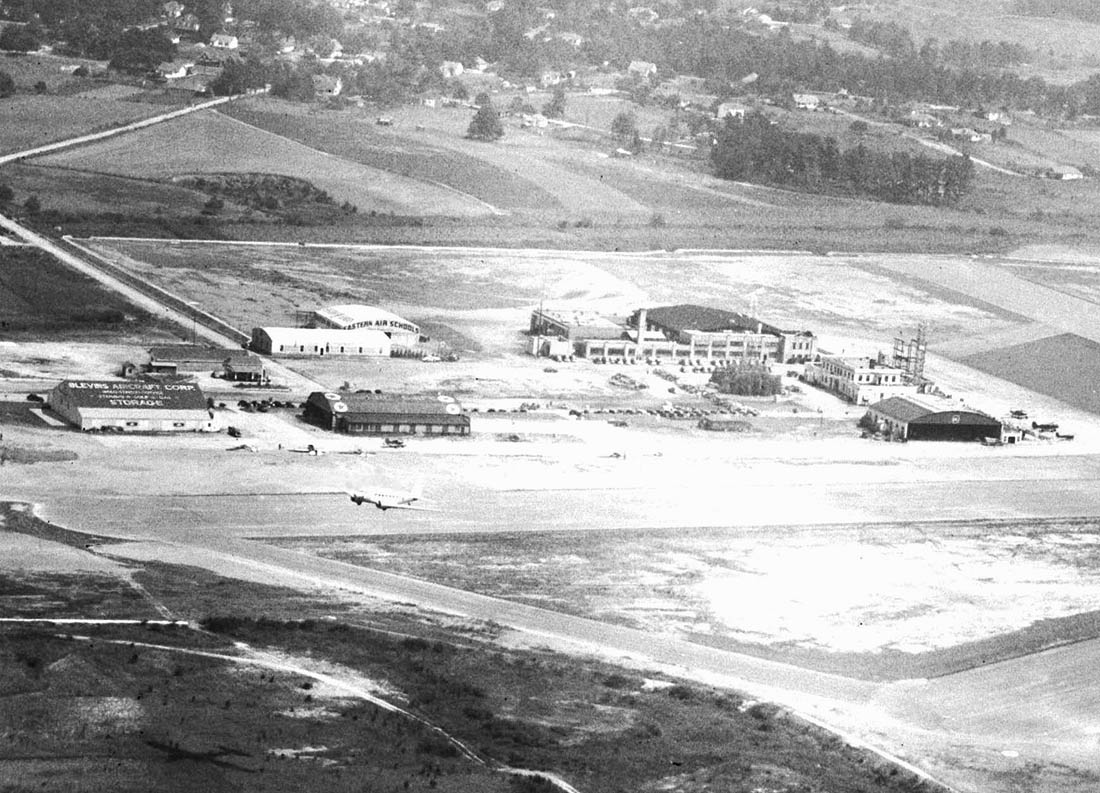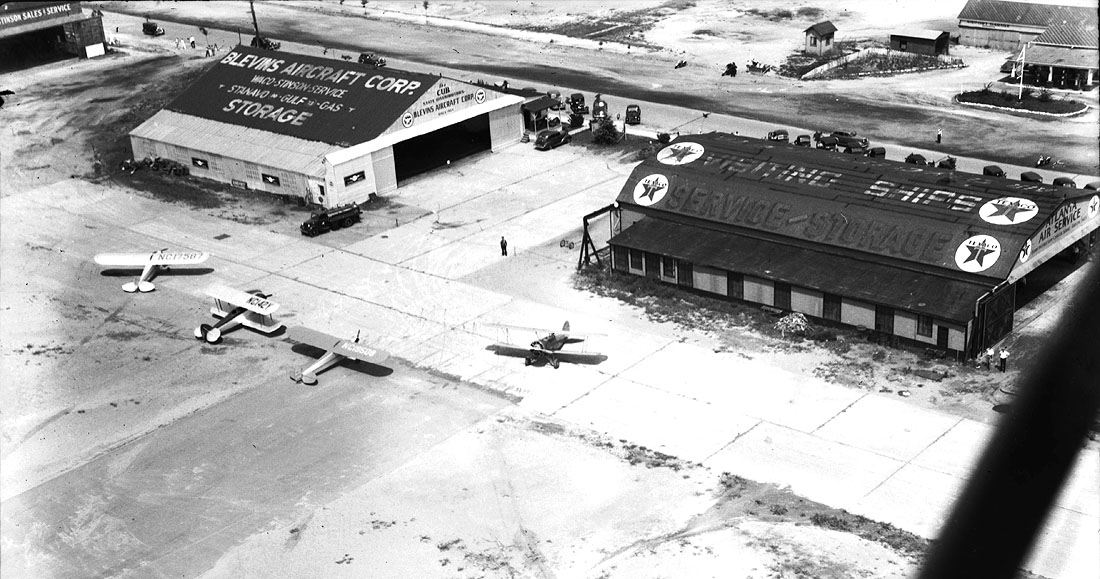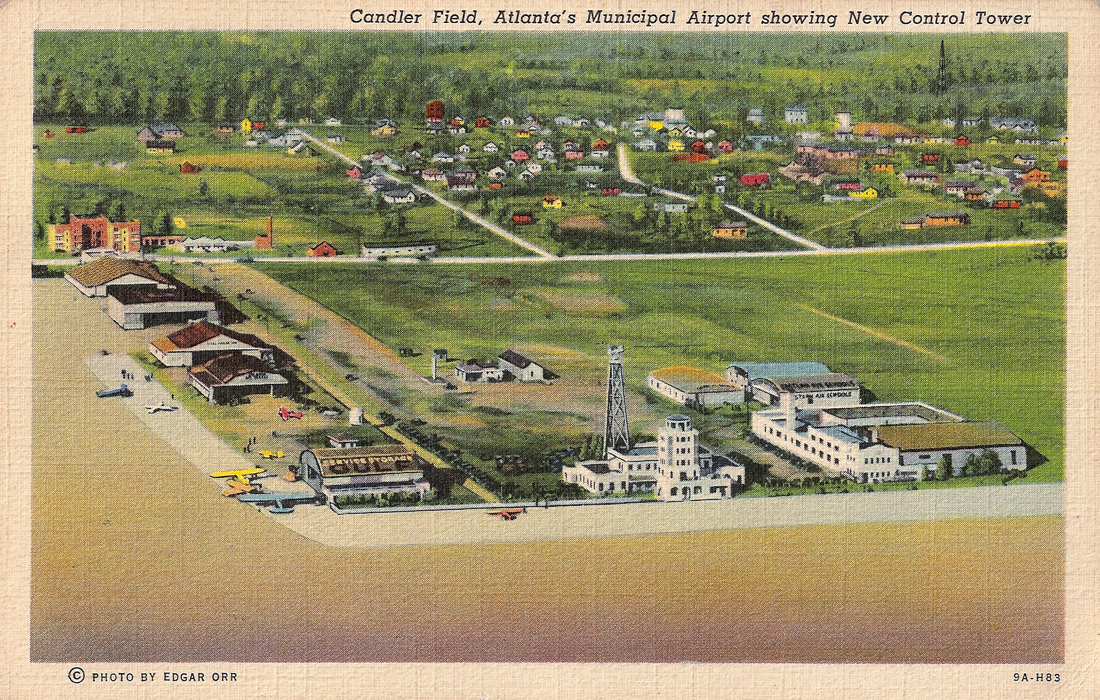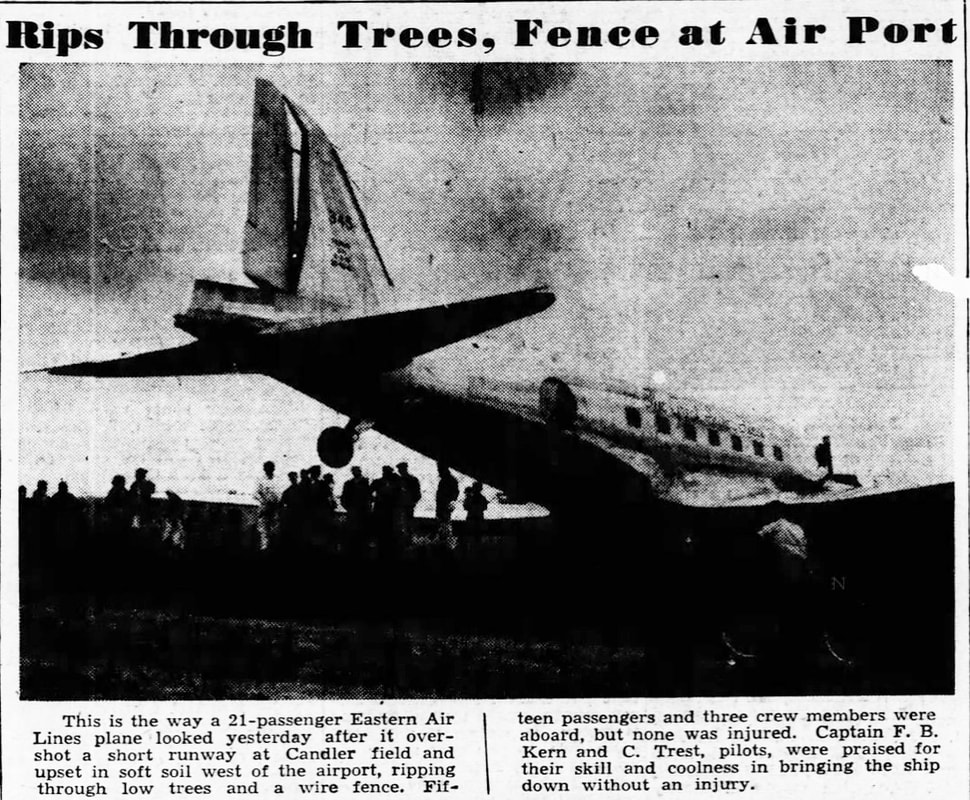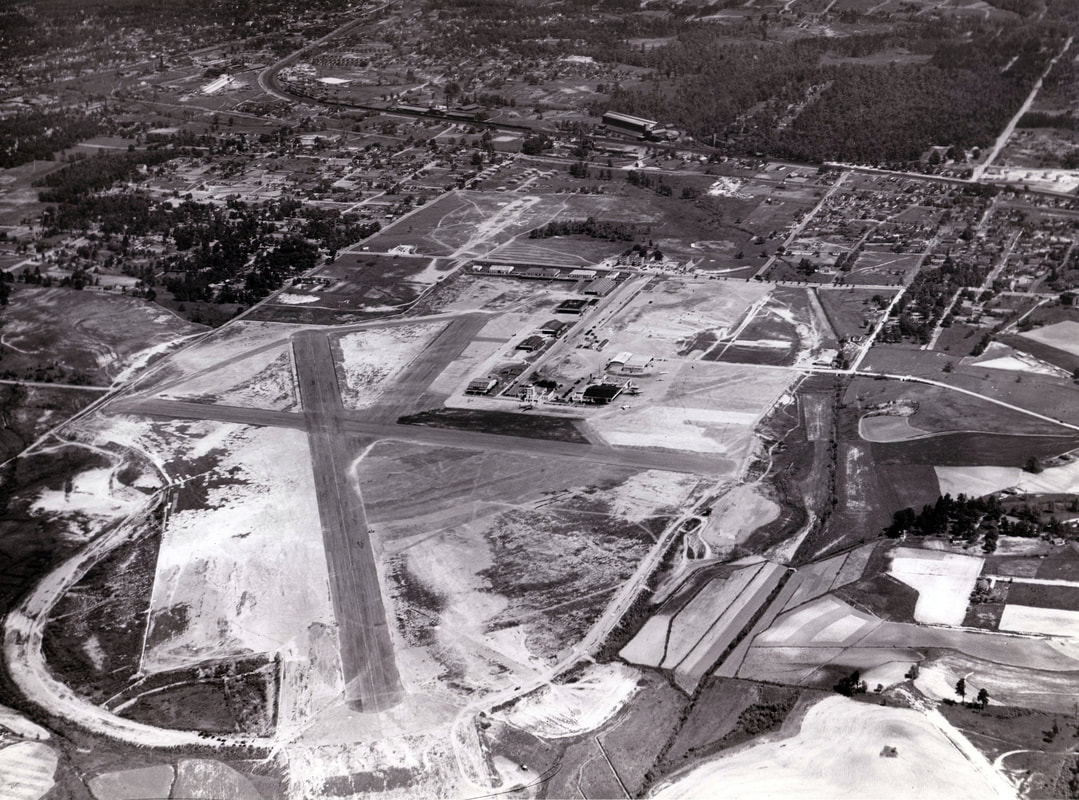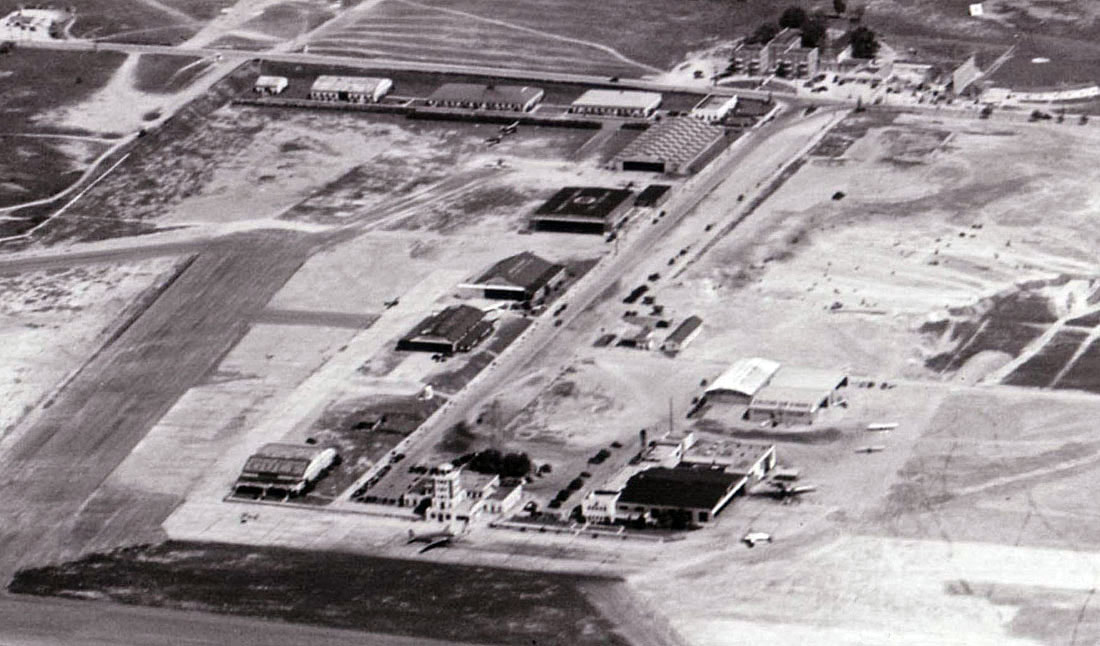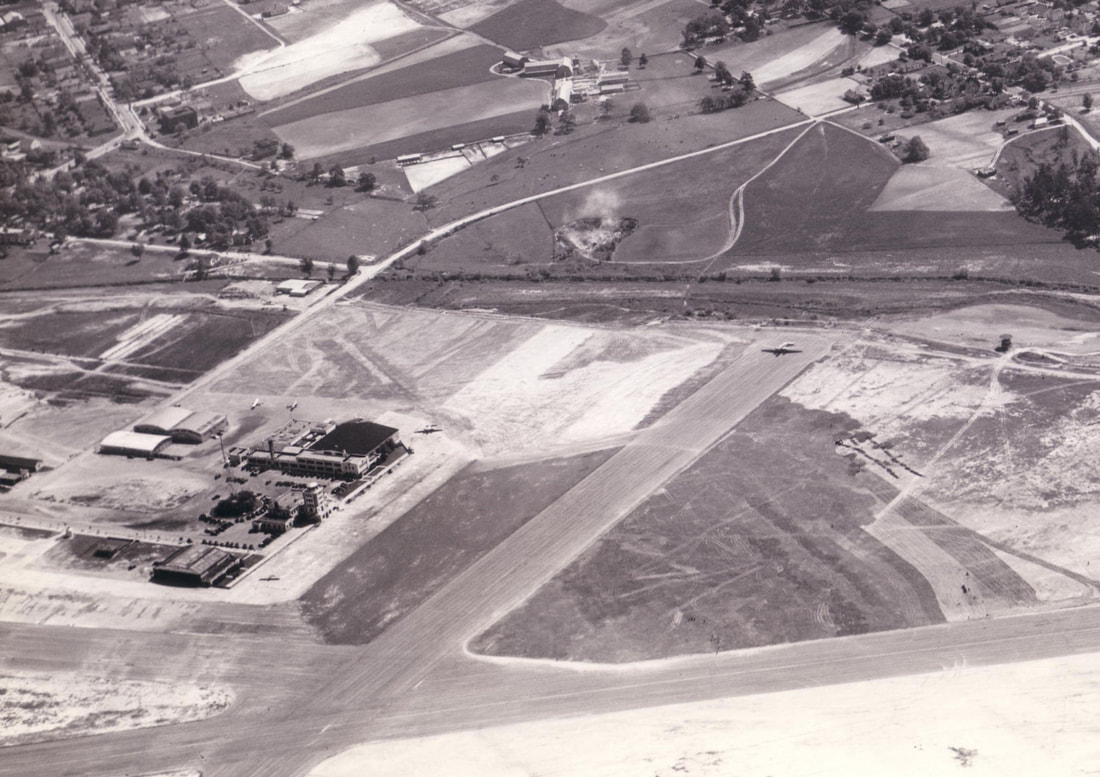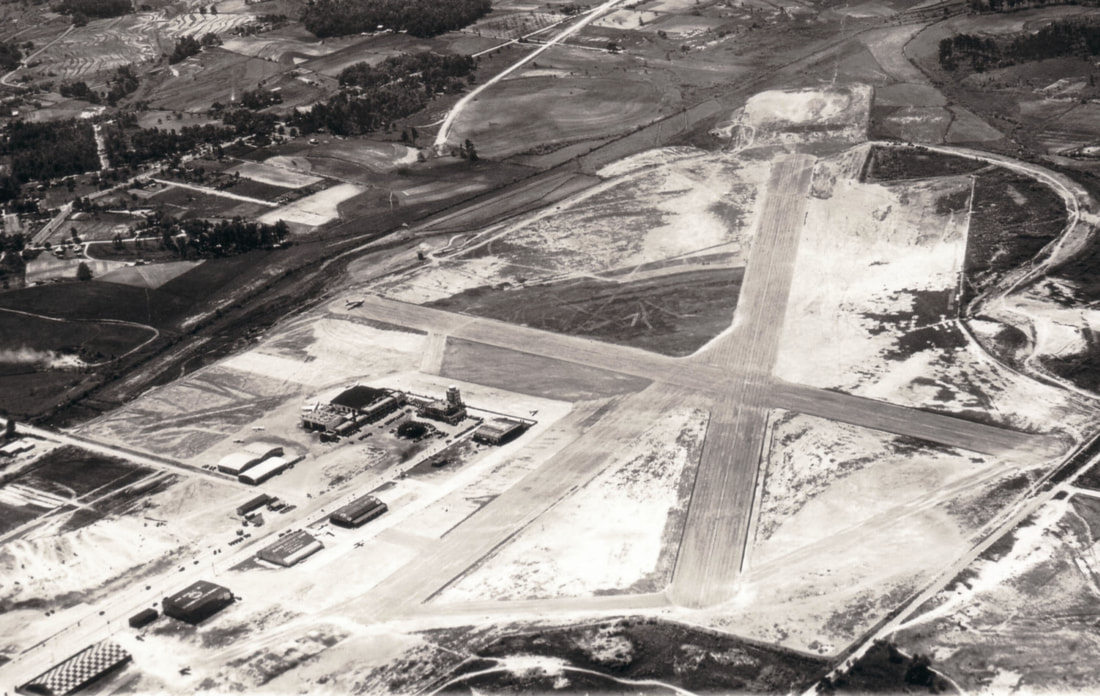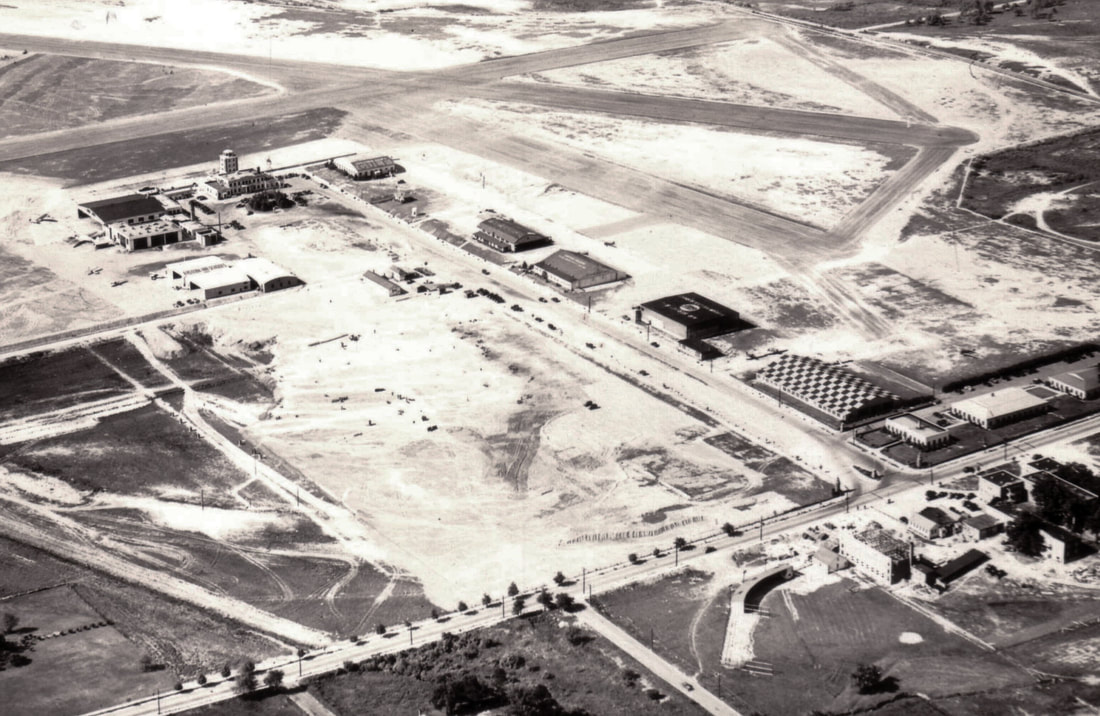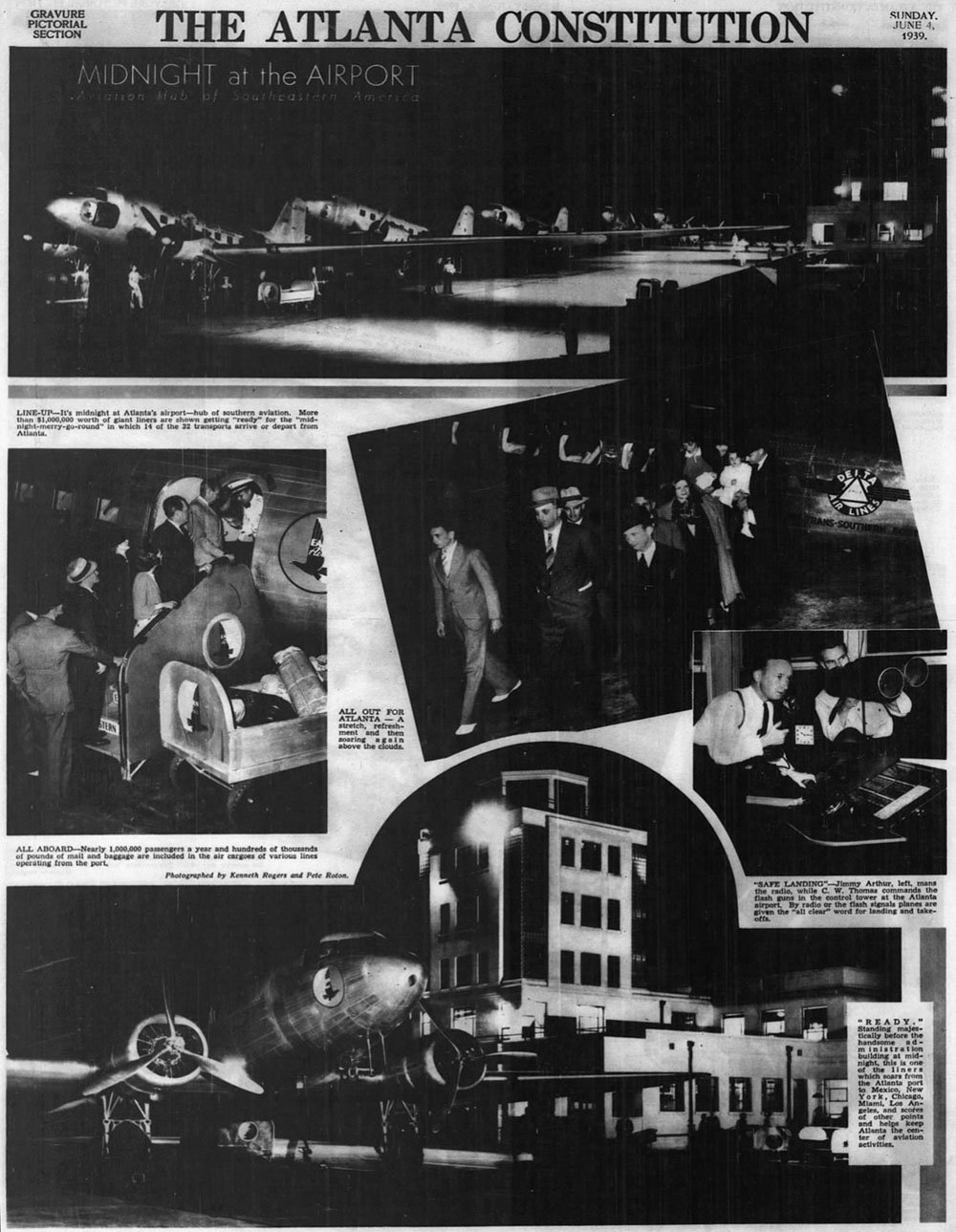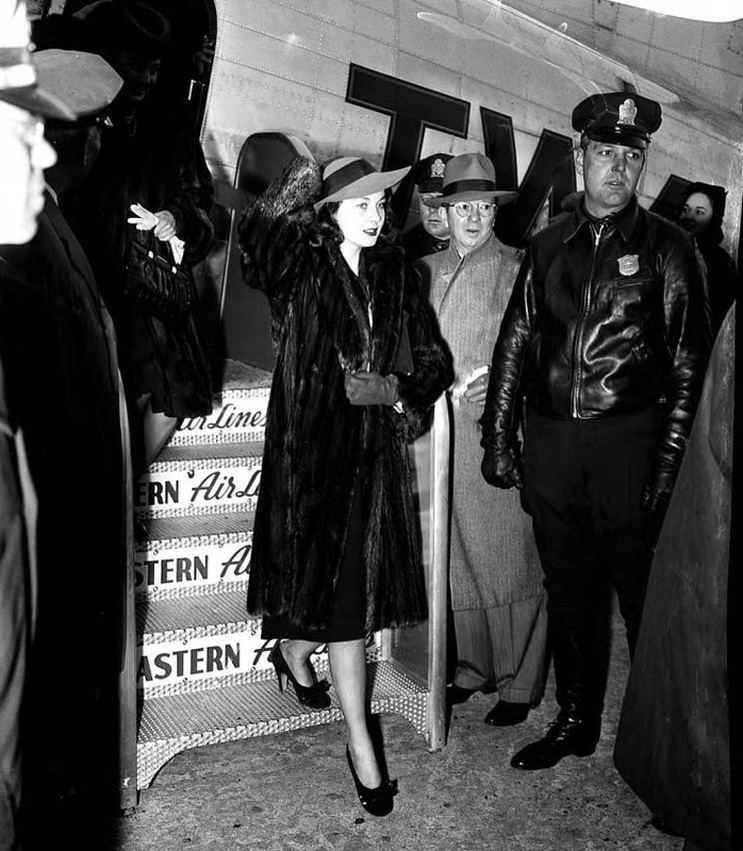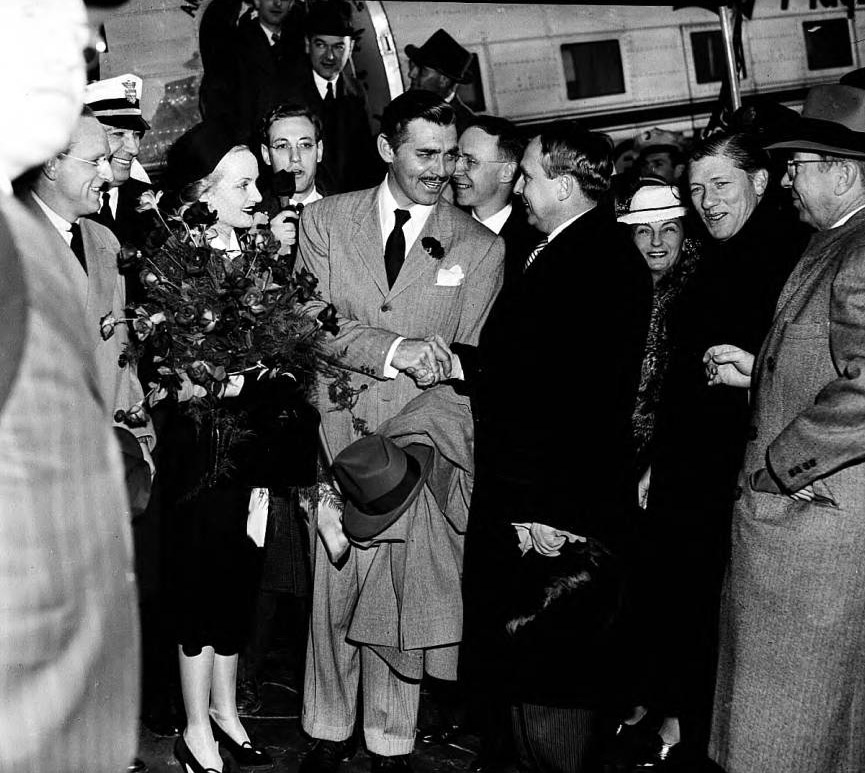ATLANTA AIRPORT IN THE LATE 1930s
By the mid 1930s Atlanta had become the primary air hub of the southeast with Delta providing 4 daily departures along its east-west route and Eastern Air Lines providing 10 daily flights to points in the midwest, Florida and the northeast. This 1935 photo shows the main terminal and administration building in the foreground and the Eastern Air Lines hangar and offices behind and to the right. Photo from the Georgia State University Eastern Air Lines Collection.
While Eastern Air Lines and other major airlines introduced the 14-passenger Douglas DC-2 in 1934, the smaller Delta Air Lines introduced the 10-passenger Lockheed Electra in December 1935. It was airline's first all metal aircraft. Although it was smaller than the DC-2, it was faster, cruising at over 200 mph. This January 10, 1936 advertisement shows the flight times between Dallas and Atlanta shortened by over 3 hours from just a few years earlier. The $116 one-way fare for the connecting flights to Los Angeles would cost approximately $2194 today.
A 1936 side view of the terminal taken from the Eastern building during an air show. Photo from the Atlanta History Center collection. This is facing west and the water tower in the distance was located in downtown College Park.
Here's an incredible piece of history: a color home movie from Summer 1938 showing the arrivals and departures of Eastern DC-2s and DC-3s.
An Eastern Air Lines DC-2 at Atlanta in August 1938. In the background, construction had begun on the new control tower / administration building that would open the following year.
A close up of the same photo. So many little details to look at!
This aerial photo, facing north, shows the new control tower under construction. The Atlanta skyline can be seen through the haze at top right.
Another view of the airport, this time facing southeast, shows the new tower under construction at right. Look closely and you can see an airborne DC-2 just to the left of the center of the photo.
A circa 1938 aerial view of the Blevins and Atlanta Air Service hangars. Click HERE for hi-res version. Photo courtesy of the Georgia State University Library Digital Collections.
The new six story control tower opened in January 1939 and remained in operation until 1961.
When the large 21-passenger Douglas DC-3s entered service with Eastern in 1936, it became apparent that Atlanta's short runways were marginal at best for fully loaded planes and inadequate for flight operations during less than ideal weather conditions. It wasn't until an Eastern DC-3 slid off the end of a wet runway on March 27, 1939 that the city vowed to take action. It took another year and a half before the airport improvement project began.
An absolutely fantastic aerial view taken on May 5, 1939 shows the entire layout of the airport and the remains of the racetrack that closed nearly 3 decades earlier. The crashed DC-3 in the previous photo went off the end of the east-west runway on the left side of the photo. From the collection of the Hagley Digital Archives.
A detail of the same photo showing the Army barracks at top, the row of hangars leading from Virginia Avenue to the main terminal and an Eastern Air Lines DC-2 on the ramp.
This next in a series of aerial photos taken on May 5, 1939 is facing northeast towards Hapeville. The DC-2 from the previous photo is ready for departure on the east-west runway. The Flint River runs left to right just beyond the airport boundary. The dairy farm at top center is now the area of the north cargo building. From the collection of the Hagley Digital Archives.
This view is facing southeast. The DC-2 at the end of the runway gives you a good idea of just how short the runways were at that point.
And finally, the view facing southwest with Virginia Avenue in the foreground.
This full page pictorial, "Midnight at the Airport" appeared in the June 4, 1939 Atlanta Constitution and shows the airport as a bustling connecting hub, even in the middle of the night. In the days before air conditioning, people often traveled at night to avoid the brutal heat and humidity of Georgia summers.
The premiere of Gone With The Wind on December 15, 1939 was a major event in Atlanta. Lead actress Vivien Leigh, followed by Olivia De Havilland, is seen deboarding a chartered TWA DC-3 upon arrival in Atlanta on December 13, 1939.
The following day, Clark Gable and wife Carole Lombard were greeted by Georgia Governor Rivers upon their arrival at Atlanta Municipal Airport. William Hartsfield is to the right of Gable, just behind his left shoulder. Photo courtesy of the Georgia State University Library Digital Collections.

